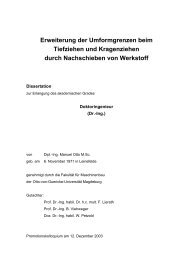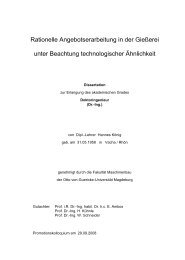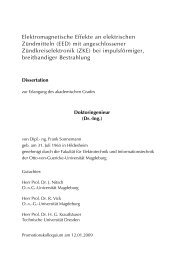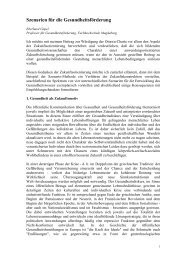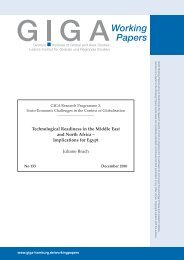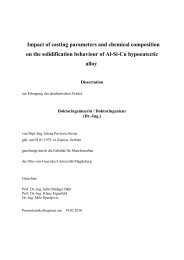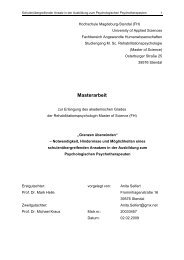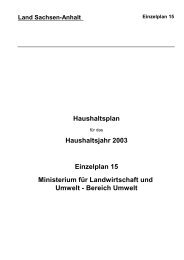Chapter 1
Chapter 1
Chapter 1
You also want an ePaper? Increase the reach of your titles
YUMPU automatically turns print PDFs into web optimized ePapers that Google loves.
or in the public sector. The Bank is undertaking additional to encourage study activities (in Tunisia and abroad) which<br />
studies to determine how to: (1) reduce selectivity in basic closely correspond to the country's development objectives.<br />
education, (2) upgrade the professional vocational training Many governments reserve state scholarships to finance spesystem,<br />
and (3) create an enabling environment that encour- cializations that have the most economic relevance for the<br />
ages the private provision of vocational training. country, while activities considered less important are<br />
financed through private resources.<br />
Tertiary education There is considerable room for nonprofit private sector<br />
expansion in tertiary education in Tunisia, where at present<br />
The Government's education and vocational training virtually all (97 percent) of higher education is provided and<br />
reform program as well as its broader reform objectives for financed by the state. This contrasts with several Asian counthe<br />
civil service and private sector development are causing tries, where private financing covers a larger share of higher<br />
the country to rethink the objectives, financing, and study education costs (Malaysia 35 percent, Indonesia 49 percent,<br />
emphasis of its tertiary education system. Tunisian higher Korea 77 percent, and the Philippines 86 percent). 3 The<br />
education has a strong administrative and legal tradition, Government can promote the private sector's expansion by<br />
but a greater emphasis needs to be placed on training civil regulating the quality of education and by using official<br />
servants in how to analyze different tax regimes, trade, fis- accreditation policies which the Government is currently<br />
cal and monetary policies, and to train lawyers in business- trying to put into place. It can open up opportunities for the<br />
related regulations, for example, contract law, bankruptcy development of high standard private institutions (possibly<br />
laws, property rights, copyrights, and financial disclosure set up in affiliation with foreign universities) and encourage<br />
laws. As the private sector expands, entrepreneurs need greater private sector financing through corporate tax incentraining<br />
in business administration. The new advances in tives and fee based cost recovery measures which would<br />
teaching methods and the expansion of higher level primary reduce the state's financial burden and promote a better<br />
education requires more teacher training. For example,<br />
Portugal, Malaysia, and Chile have anywhere from 3 to 4<br />
allocation of public resources.<br />
times more students enrolled in business administration, 2<br />
to 3 times more in engineering, and 2.5 to 4 times more in<br />
Health care and social security<br />
teacher training, architecture, and town planning than in The Government has secured good quality and nearly uni-<br />
Tunisia (table 2.7). The Government needs to consider ways versal access to health care through the public provision of<br />
health services. Currently 90 percent of the population<br />
TABLE 2.7 resides within one hour's walking distance of a health facil-<br />
Comparison of enrollment In tertiary education by ity. The ratio of population to doctors is still quite low for a<br />
flield of study low-middle income country, but it has improved consider-<br />
(Percent.. shawe of total enrollmenvt) ably from 0.17 doctors per thousand people in the 1970s to<br />
Field of stud)'<br />
Tunisia<br />
1990-92<br />
Malaysia<br />
1989-90<br />
Portugal<br />
1990-91<br />
Chile<br />
1990-91<br />
0.67 per thousand today For nurses, the number has gone<br />
from 1.06 to 3.33 per thousand. Public health facilities are<br />
Education and available to everyone and are organized at three levels: (1)<br />
teacher training<br />
Humanities<br />
Law<br />
5.0<br />
24.7<br />
12.8<br />
23.0<br />
8.6<br />
1.9<br />
13.1<br />
8.9<br />
8.9<br />
12.1<br />
3.0<br />
4.1<br />
university structures (specialized institutes and tertiary hospitals),<br />
(2) regional or 'second line" structures (secondary<br />
(Commea e and business<br />
administraion) 6.5<br />
Natural sciences 13.4<br />
28.0<br />
20.5<br />
10.6<br />
30.4<br />
18.9<br />
75<br />
32.2<br />
22.9<br />
35<br />
hospitals), and (3) "first line" or provincial structures (dis-<br />
trict hospitals and primary health care centers). The health<br />
sector priorities in Tunisia combine the concems facing<br />
Medicine<br />
Engineering<br />
Architecture and<br />
10.6<br />
9.4<br />
2.7<br />
13.4<br />
5.6<br />
18.0<br />
5.9<br />
31.1 developing as well OECD countries:<br />
* Securing a sustainable system for financing growing<br />
torn planning 1.7 826 3210 2.0 health care costs and needs;<br />
Total 100.0 100.0 ioo.o io.o * Meeting the demands of a growing population which,<br />
Source: UNESCO Educouon Stastetd otarbook 1994. according to the 1994 census, is estimated to be increasing<br />
22 TuNIsiA's GLOBAL INTEGRATION AND SusTAINABLE DVELoPMEN, STRATEGIC CHOICES FOR THE 21sr CENTWW




